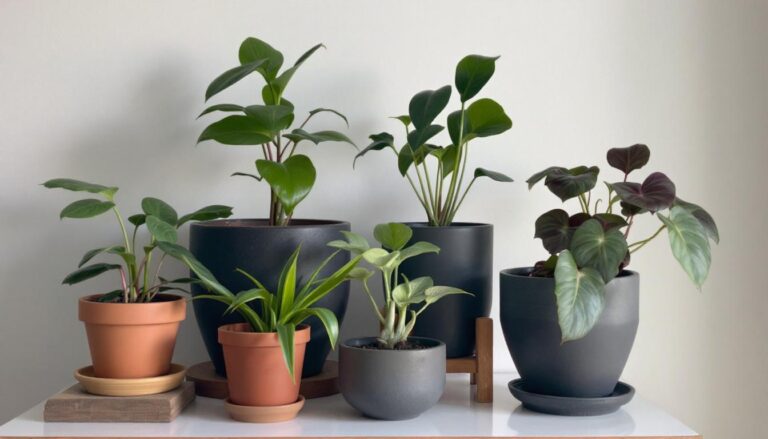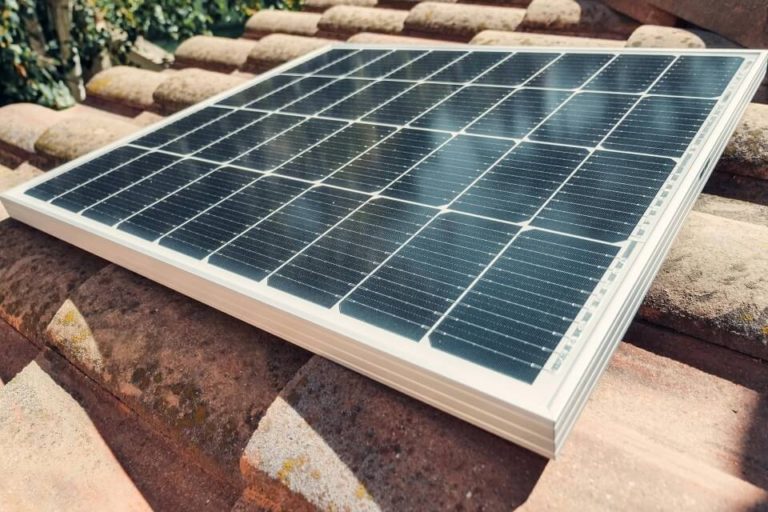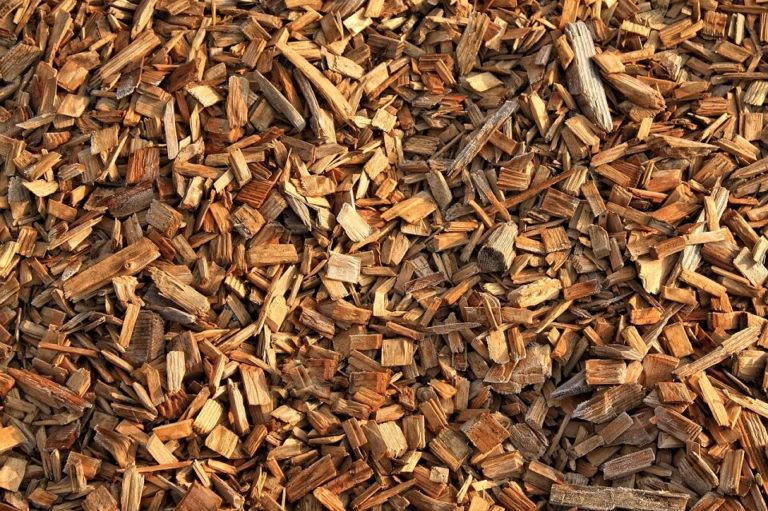How to Use Grow Lights For Indoor Plants to Optimize Growth
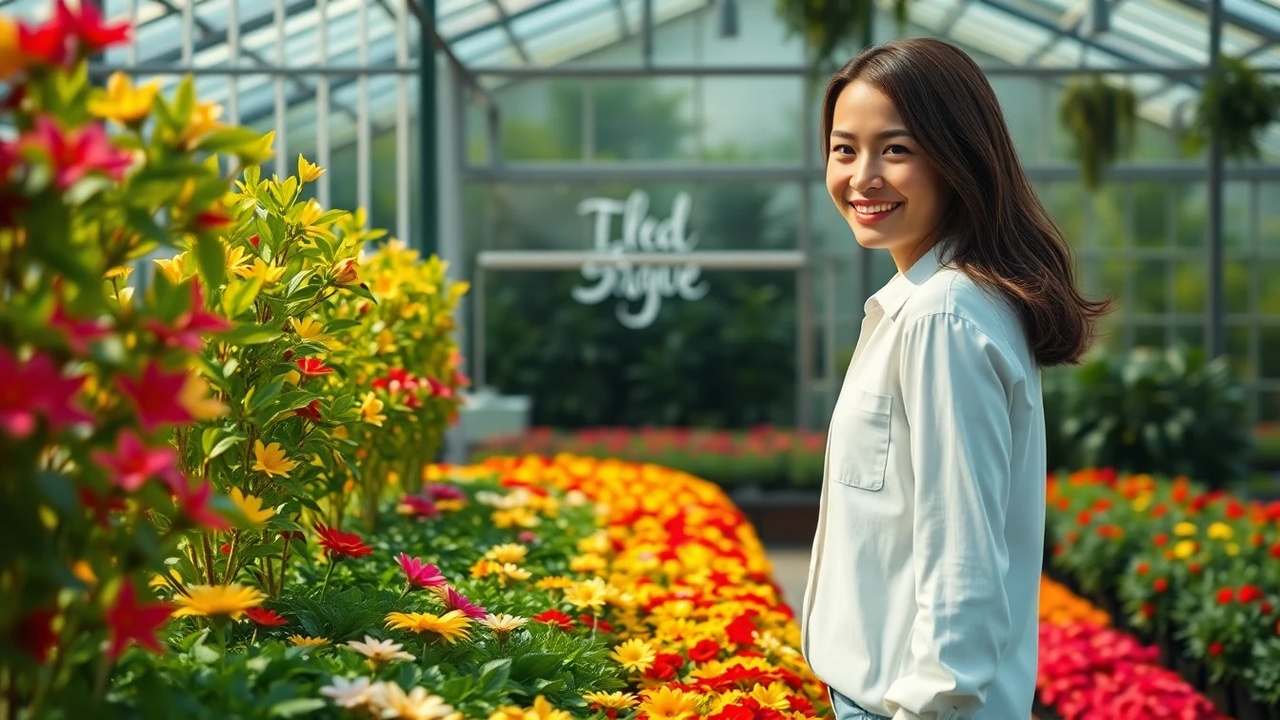
Indoor gardening enthusiasts know the importance of providing the right conditions for their plants to thrive. When it comes to cultivating a vibrant indoor garden, one essential aspect that often goes overlooked is the use of grow lights for indoor plants.
Grow lights play a crucial role in ensuring that indoor plants receive an adequate amount of light for photosynthesis, especially in spaces with limited access to natural sunlight. By simulating the natural light spectrum, grow lights provide plants with the energy they need to flourish and grow healthily.
In this blog post, we will delve into the reasons why having grow lights for indoor plants is vital for the success of your indoor garden. From understanding the benefits of using grow lights to choosing the right type of light for different plant varieties, we will explore how incorporating this technology can make a significant difference in the growth and overall well-being of your indoor plants. So, let’s embark on this illuminating journey into the world of indoor gardening with grow lights.
TABLE OF CONTENTS
10 Best LED Grow Lights for Indoor Plants
» Monios-L Full Spectrum LED Grow Light
The Monios-L 4ft LED grow light provides a full spectrum of light for indoor plants, making it a great replacement for natural sunlight. It’s super bright with 60W of power, perfect for all stages of plant growth. The 5000K color temperature is easy on your eyes and perfect for any indoor application. The high-quality LED chips and aluminum housing ensure high light efficiency and safety. Easy installation with all the necessary accessories included. Plus, you get a 24-month warranty and 100% money-back guarantee for peace of mind. Great for all your plant-growing needs!
Benefits of Grow Lights for Indoor Plants
Indoor gardening enthusiasts can attest to the transformative benefits that grow lights bring to their plant companions. Let’s delve into the advantages that these artificial light sources offer to indoor plants, helping them thrive and flourish regardless of the season.
» Promotes Plant Growth
Grow lights play a pivotal role in fostering robust plant growth by providing a seamless light source that mimics the sun’s natural rays. Through photosynthesis, plants convert light into energy, fueling their growth and development. By leveraging grow lights, indoor plants receive the necessary light spectrum essential for photosynthesis, ensuring optimal growth even in areas with limited natural light exposure.
» Year-Round Planting Opportunities
One of the game-changing aspects of incorporating grow lights into indoor gardening setups is the ability to cultivate plants year-round. Regardless of the external environment or seasonal changes, indoor gardeners can maintain a thriving green space by leveraging grow lights to supplement natural light deficiencies. This enables gardeners to embark on a continuous gardening quest, sowing seeds of various plants without being constrained by the external climate.
» Enhances Flowering and Fruiting
For flowering plants and fruit-bearing crops, the presence of adequate light is crucial for triggering blooming and fruiting processes. Grow lights offer a consistent light source that ensures plants receive the required light intensity and spectrum to stimulate flowering and fruit production. With the strategic placement of grow lights, indoor gardeners can witness their plants blossom and bear fruits, creating a visually stunning and bountiful indoor garden oasis.
» Improves Plant Health
The resilience and overall health of indoor plants are greatly influenced by the light they receive. Grow lights provide a tailored lighting solution that addresses the specific light requirements of different plant species, contributing to enhanced plant health and vitality. By optimizing light exposure through the use of grow lights, indoor gardeners can mitigate issues such as leggy growth, pale leaves, and stunted development, promoting vibrant and thriving plant specimens.
Incorporating grow lights into indoor gardening setups is a proactive approach to ensuring that plants receive the essential light they need to thrive. By harnessing the power of artificial light sources, indoor gardeners can create a flourishing green haven within their living spaces, reaping the benefits of year-round gardening, enhanced plant growth, and blooming floral displays.
Types of Grow Lights
When it comes to providing light for indoor plants, choosing the right type of grow light is crucial for their growth and development. There are several options available, each with its own set of advantages and considerations to keep in mind.
» Fluorescent Grow Lights
Fluorescent grow lights are a popular choice for indoor gardening due to their affordability and versatility. They come in two main types: T5 and CFL (compact fluorescent light) bulbs. T5 fluorescent lights are known for their energy efficiency and are great for seedlings and young plants. On the other hand, CFL bulbs are cost-effective and emit a spectrum of light suitable for various plant growth stages. Fluorescent grow lights are ideal for a wide range of plants and are easy to set up, making them a practical option for beginners.
» LED Grow Lights
LED grow lights have gained popularity in recent years for their energy efficiency and customizable light spectrum. These lights produce less heat than traditional grow lights, reducing the risk of damaging plants. LED grow lights can be tailored to meet specific plant needs by adjusting the intensity and spectrum of light emitted. While they may have a higher upfront cost, their long lifespan and low energy consumption make them a cost-effective choice in the long run. LED grow lights are suitable for a variety of plants and offer flexibility for indoor gardeners.
» High-Intensity Discharge (HID) Grow Lights
HID grow lights are powerful lighting options that provide high levels of light intensity, making them ideal for plants that require high light levels, such as fruiting and flowering plants. There are two main types of HID grow lights: Metal Halide (MH) and High-Pressure Sodium (HPS). Metal Halide lights emit a bluish-white light spectrum that promotes vegetative growth, making them suitable for leafy greens and young plants. High-Pressure Sodium lights emit a reddish-orange spectrum that is ideal for promoting flowering and fruiting in plants. While HID grow lights are efficient in promoting plant growth, they tend to produce more heat and require adequate ventilation to prevent overheating.
Choose the right grow light based on your indoor gardening needs and the specific requirements of your plants to ensure they receive the optimal light for healthy growth and development.

Factors to Consider When Choosing Grow Lights
When selecting the right grow lights for your indoor plants, there are several essential factors to take into account. Each plant has unique light requirements for optimal growth and health. Understanding these factors will help you make an informed decision and provide the best conditions for your plants to thrive.
» Light Spectrum and Intensity
The light spectrum emitted by grow lights plays a crucial role in supporting plant growth. Different types of plants require specific light wavelengths for photosynthesis. For instance, blue light encourages vegetative growth, while red light promotes flowering and fruiting. Ensure your grow lights offer a full spectrum with adjustable intensity levels to meet your plants’ needs at various growth stages.
» Energy Efficiency
Opt for energy-efficient grow lights to save on electricity costs and minimize environmental impact. LED grow lights are a popular choice due to their energy efficiency and long lifespan. They produce less heat, reducing the need for additional cooling systems in your indoor growing space. Look for grow lights with high energy efficiency ratings to support sustainable plant cultivation.
» Cost and Budget
Consider your budget when choosing grow lights for your indoor plants. While high-end models may offer advanced features, more budget-friendly options can still provide adequate lighting for your plants. Calculate the total cost of ownership, including energy consumption and maintenance, to determine the most cost-effective solution that meets your plant’s requirements and fits your budget.
» Space and Plant Needs
Evaluate the size of your growing space and the specific needs of your plants to determine the number and type of grow lights required. Compact spaces may benefit from adjustable light panels or vertical lighting systems to maximize coverage. Take into account the light requirements of different plant varieties to create an optimal growing environment that accommodates various species in a single space.
Choosing the right grow lights tailored to your plants’ requirements is essential for successful indoor gardening. By considering factors such as light spectrum, energy efficiency, cost, and space constraints, you can create an ideal lighting setup that promotes healthy plant growth and abundant harvests.
Setting Up Grow Lights
When it comes to setting up grow lights for your indoor plants, there are a few key considerations to keep in mind to ensure your plants thrive and grow healthy. Let’s delve into the essential aspects of setting up grow lights: determining light placement, establishing an ideal light schedule, and avoiding light burn.
» Determining Light Placement
Proper placement of grow lights is crucial for the overall well-being of your indoor plants. Consider the light requirements of each plant species you are growing. Some plants may require direct light, while others thrive better with indirect or diffused light. Ensure that the grow lights are positioned at an optimal distance from the plants to provide adequate coverage without causing light burn.
» Ideal Light Schedule
Creating a consistent light schedule is essential for mimicking natural sunlight conditions and promoting healthy growth in your indoor plants. Most indoor plants require around 12-16 hours of light per day. Consider using a timer to automate the light schedule, ensuring your plants receive the right amount of light each day. Remember to allow for periods of darkness to prevent overexposure to light.
» Avoiding Light Burn
Light burn can occur when plants are exposed to excessive light intensity or heat from grow lights. To avoid light burn, monitor your plants regularly for signs of stress such as leaf discoloration or wilting. Adjust the light intensity or height of the grow lights as needed to provide the optimal amount of light without causing harm to your plants. Additionally, consider using grow light bulbs specifically designed to emit the right spectrum of light for plant growth.
Setting up grow lights for your indoor plants requires a balance of understanding your plant’s light requirements, establishing a consistent light schedule, and preventing potential issues like light burn. By following these guidelines, you can create a conducive environment for your indoor plants to thrive and flourish under artificial lighting.
Common Mistakes to Avoid
When it comes to using grow lights for indoor plants, there are several common mistakes that many people make. By being aware of these pitfalls, you can ensure that your plants receive the optimal light they need to thrive.
» Overlooking Light Requirements
One of the most common mistakes indoor gardeners make is overlooking the specific light requirements of their plants. Different plants have varying needs when it comes to light intensity and duration. It’s crucial to research the light requirements of each plant you have and choose the appropriate grow light that can provide the right spectrum and intensity for optimal growth.
» Incorrect Light Distance
Another common mistake is placing the grow lights too close or too far away from the plants. If the lights are too close, they can burn the leaves, causing irreparable damage. On the other hand, if the lights are too far, the plants may not receive an adequate amount of light for photosynthesis. It’s essential to follow the manufacturer’s recommendations for the optimal distance between the grow lights and your plants to ensure they receive the right amount of light without any negative effects.
» Inconsistent Light Schedule
Maintaining a consistent light schedule is key to the success of your indoor plants. Some growers make the mistake of not sticking to a regular light schedule, which can disrupt the plants’ growth cycle and lead to issues like flowering problems or stunted growth. It’s important to set a timer for your grow lights to ensure your plants receive the consistent amount of light they need every day, mimicking natural daylight patterns to promote healthy growth.
By avoiding these common mistakes and taking the time to understand the light requirements of your indoor plants, you can create an optimal growing environment that will result in healthy, thriving plants. Remember, the right amount of light is essential for the overall well-being of your indoor garden, so ensure you provide your plants with the care they need to flourish.
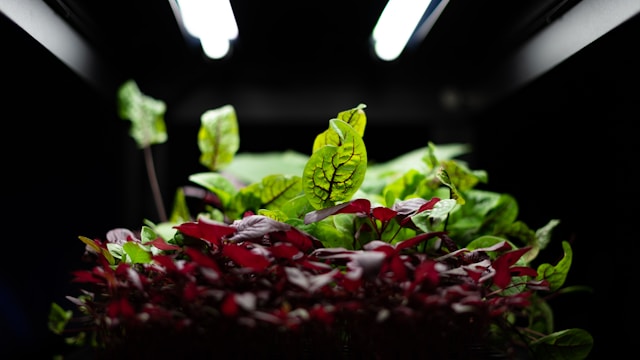
Maximizing Plant Growth with Grow Lights
There’s more to using grow lights for indoor plants than just setting them up and turning them on. To truly maximize plant growth and ensure your green friends thrive, consider implementing the following strategies:
» Rotating Plants
Rotating your plants regularly under grow lights is like giving them a sunbath from all angles. This practice helps prevent lopsided growth and ensures that each part of the plant receives adequate light exposure. It simulates how plants naturally grow outdoors, benefiting from sunlight throughout the day. By rotating your plants, you encourage balanced growth and healthier development.
» Monitoring Plant Progress
Just as we check the weather forecast to plan our day, monitoring your plants’ progress is key to their well-being. Keep an eye on how your plants are responding to the grow lights. Are they leaning towards the light source? Are the leaves turning brown or yellow? Adjust the light intensity or duration accordingly. Regular observation allows you to address any issues promptly, ensuring your plants receive the optimal light conditions for growth.
» Supplemental Nutrients and Watering
Grow lights provide the energy for photosynthesis, but plants also need essential nutrients and water for overall health. Consider supplementing your plants with fertilizers rich in nitrogen, phosphorus, and potassium to support robust growth. Additionally, maintain proper watering practices to prevent dehydration or waterlogging. Balancing light exposure, nutrients, and water will create a harmonious environment for your indoor plants to thrive under grow lights.
By implementing these practices of rotating plants, monitoring progress, and providing supplemental nutrients and watering, you can harness the full potential of grow lights for indoor plants. Remember, a little care and attention go a long way in nurturing your botanical companions under artificial light.
Conclusion
In conclusion, investing in grow lights for indoor plants is crucial for ensuring the health and vitality of your indoor greenery. Grow lights provide the essential light spectrum needed for photosynthesis, promoting robust growth and blooming. By incorporating grow lights into your indoor gardening setup, you can enjoy lush, thriving plants year-round, regardless of natural light availability. Remember, with the right grow lights, you can transform any indoor space into a flourishing garden sanctuary. Elevate your indoor gardening game with the power of grow lights today!
Frequently Asked Questions about Grow Lights for Indoor Plants
» What are the benefits of using grow lights for indoor plants?
Using grow lights for indoor plants helps ensure they receive adequate light for photosynthesis, promoting healthy growth and blooming even in spaces with limited natural light.
» How far should grow lights be from indoor plants?
As a general rule, keep growing lights about 12-30 inches away from your indoor plants, depending on the type of light and the plant species. Be sure to check the specific recommendations for your plants.
» How long should grow lights be kept on for indoor plants?
Most indoor plants benefit from about 12-16 hours of light per day. Using a timer can help maintain a consistent lighting schedule for optimal plant growth.
» What type of grow light is best for indoor plants?
The best type of grow light for your indoor plants depends on the specific needs of your plants. LED grow lights are energy-efficient and versatile, while fluorescent lights are cost-effective. Consider the light requirements of your plants before choosing.
» Do indoor plants need darkness at night?
Yes, indoor plants, like most plants, need a period of darkness at night to rest and undergo essential processes like respiration. Providing a consistent light/dark cycle is crucial for the overall health of your plants.
» Can I use regular light bulbs for indoor plants?
While regular incandescent bulbs can provide some light for plants, they are not as efficient as grow lights. For optimal growth, it is recommended to use specialized grow lights tailored to the needs of indoor plants.
» How do I know if my indoor plants are getting enough light from grow lights?
Monitor your plants for signs of inadequate lighting, such as stunted growth, pale leaves, or leggy stems. Adjust the positioning and duration of the grow lights accordingly to ensure your plants thrive.
» Are grow lights a good option for all types of indoor plants?
Grow lights can benefit a wide range of indoor plants, especially those that require more light than they can receive indoors naturally. However, it’s essential to research the specific light requirements of your plants to determine if grow lights are suitable for them.



